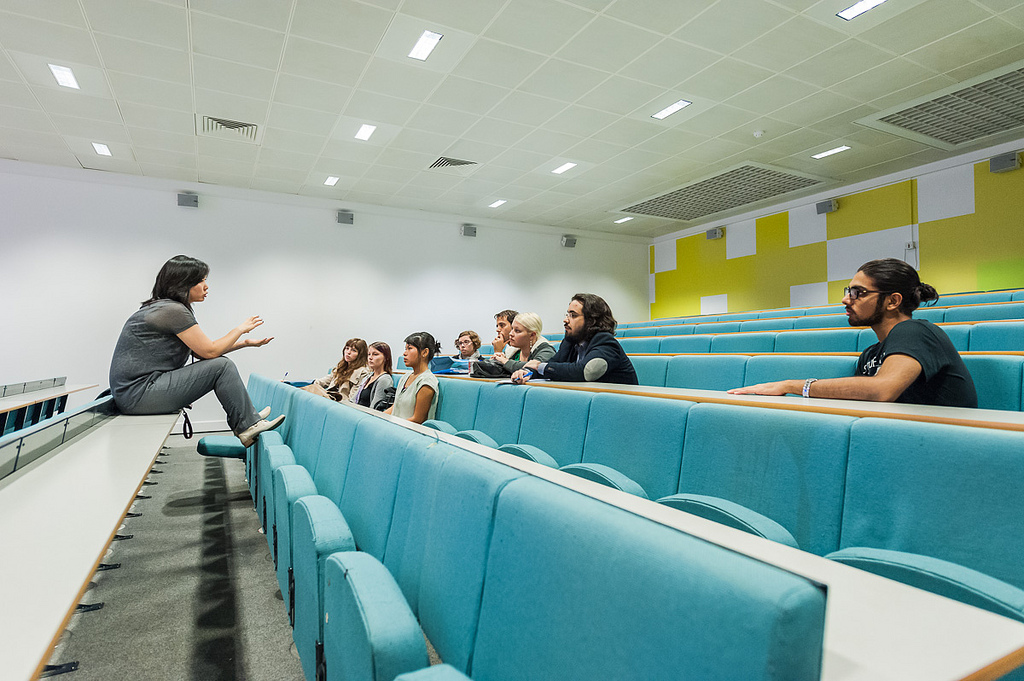International Education Week occurs the third week in November each year to highlight the advantages of international education and exchange in the United States and worldwide. In particular, International Education Week—a joint initiative between the State Department and Education Department—emphasizes the benefits of preparing more Americans for a global environment and attracting future leaders from abroad to study, learn, and exchange experiences in the U.S. The latest report from the Institute of International Education (IIE) found that a record 886,052 international students studied in the U.S. during the 2013-2014 academic year. And that means contributions to places throughout the country.
New data released Monday from NAFSA: Association of International Educators shows the economic benefits of the record-breaking international student enrollment in the United States. According to NAFSA, for the 2013-2014 academic year, international students and their families at colleges and universities across the U.S. contributed $26.8 billion to the U.S. economy and supported 340,000 jobs. Compared to the previous academic year, this is nearly a 12 percent increase in dollars contributed to the economy and an 8.5 percent increase in job support and creation.
Students coming to the U.S. are studying across the nation. California, New York, and Massachusetts saw the largest boost from international students and their families from spending on living expenses, tuition, and fees. NAFSA also found that three U.S. jobs are created or supported for every seven international students enrolled. These jobs are in higher education, accommodation, dining, retail, transportation, telecommunications, and health insurance. In House Speaker John Boehner’s Ohio district alone, 1,528 international students contributed over $56 million to the local economy and supported 837 jobs. And in Sen. Jeff Sessions’ home state of Alabama, 7,451 international students contributed around $183 million to the economy and supported 2,064 jobs. Furthermore, international students are particularly important to the U.S. metropolitan areas in which they live and study. Many foreign students come from fast-growing cities in emerging markets and international students can serve as bridges between their home cities and the U.S. cities where they come to study.
But international students and international exchange contribute far more than monetary and job gains to the economy. “We cannot underestimate their immeasurable academic and cultural contributions to America’s colleges, universities and local communities,” said NAFSA Executive Director and CEO Marlene M. Johnson. They also “bring global perspectives into U.S. classrooms and research labs, and support U.S. innovation through science and engineering coursework,” she added.
International education and exchange also builds relationships among communities in the U.S. and abroad. “It is through these relationships that together we can solve global challenges like climate change, the spread of pandemic disease, and combatting violent extremism,” Evan M. Ryan, Assistant Secretary of State for Educational and Cultural Affairs, said. In addition to expanding access to international education for students from diverse backgrounds, Ryan noted that “only by engaging multiple perspectives within our societies can we all reap the numerous benefits of international education—increased global competence, self-awareness and resiliency, and the ability to compete in the 21st century economy.”
Data from both the IIE and NAFSA reports confirm that the United States, which hosts more of the world’s 4.5 million globally mobile college and university students than any other country, remains a destination of choice for higher education—for now. Due to increased competition from other countries, the U.S. lost nearly 10 percent of its market share of international students in 10 years, declining from 28 percent in 2001 to 19 percent in 2011. Without immigration reform to help remove barriers that prevent some students from studying in the U.S. or remaining here after they finish their degrees, the U.S. is missing out on enormous benefits. “We must find a way to make the United States a more welcoming nation, a value upon which this country was founded,” Johnson said. “If Congress doesn’t take action and pass commonsense, comprehensive immigration reform, we will lose talented international students. The billions of dollars they contribute to this nation, along with the invaluable academic and cultural contributions they bring, will be at risk.”
Photo Courtesy of Brickbeck Media Services Centre.
FILED UNDER: Economics, featured, foreign students, International Exchange Week, international students, NAFSA, Students


